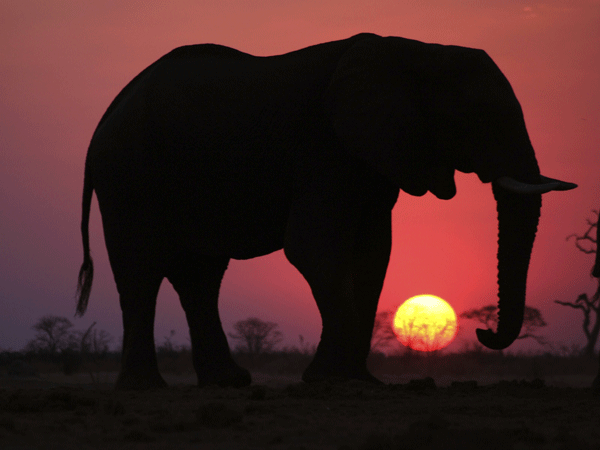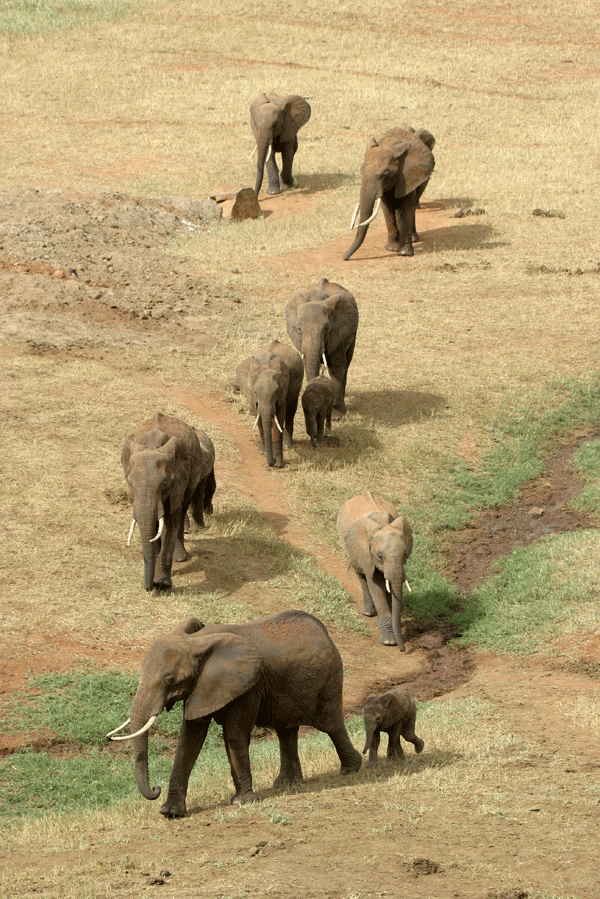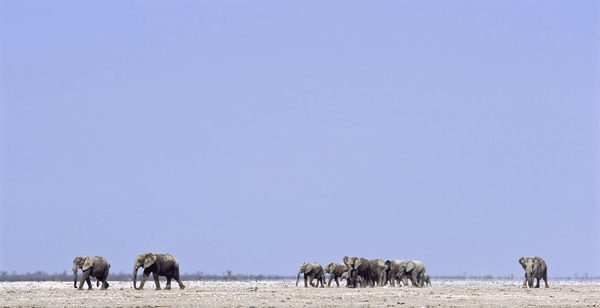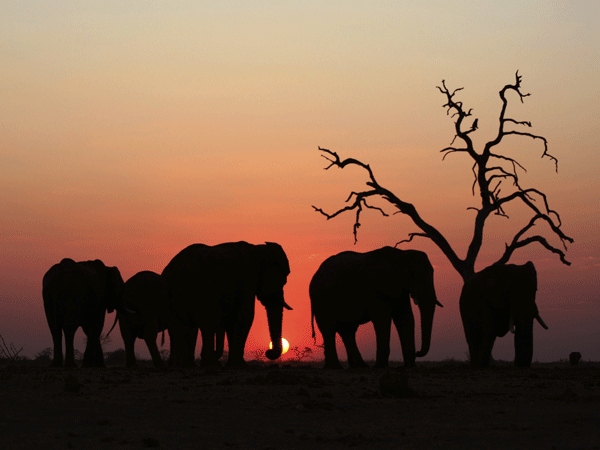We have come a long way since the days of ivory trade; and, although the decimation of Africa’s rhinos has hurtled to the forefront of environmental concern, there are slivers of light visible in the darkness that poaching has thrown over our continent. This struggle is now the focus, after years facing the murder of two thirds of the African elephant population; the first member of our Big Five to fight at the brink of extinction due to the greediness of man. Thanks to the undying commitment of many individuals and an outraged, yet, proactive community of people, the elephant once again stands proud in population. As our relentless troops of conservationists, researchers, warriors and supporters face the quandary of the fight against poaching; I encourage all to find undeniable refreshment in the progress being made by Elephants Without Borders, Peace Parks Foundation and the Kaza Transfrontier Conservation Area in the substantial development and rediscovery of elephant migration routes.
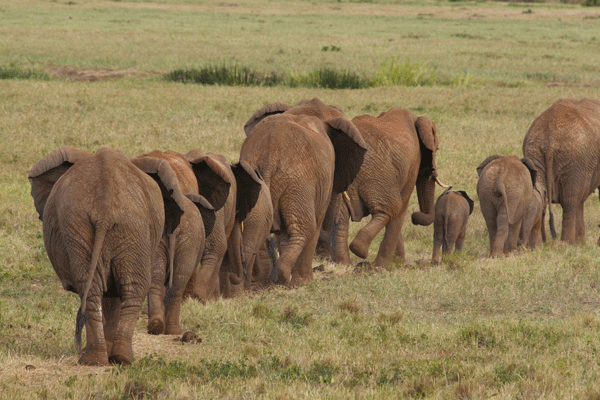
Being natural travellers, elephants walk long distances in large herds led by the oldest, therefore, wisest female – the matriarch. Before the demarcation of boundaries and borders and the settlement of humans, elephants used to follow worn and trusted migration routes, in search of greener pastures and wetter waterholes. Naturally, just like many other species in Africa, they travelled to renew their resources of food, water and shelter, as their current location became deserted of the nourishing rains. The ownership of National Parks and Game Reserves and the developing governments of countries over the years has simultaneously stunted the ranges of these terrestrial giants and has put an end to their natural migratory behaviour. The problem with elephants being restricted to these man-made borders (particularly in the hugely-populated Chobe Enclave of Botswana) is that due to the size of the herds and their insatiable appetite for vegetation, resources run out, while their sheer weight can destroy the land.
Human expansion over the years has naturally encroached on elephant ranges. Political boundaries, farming and poaching have grown with the expanding development of human settlements, and elephants have been forced to alter their innate routes in order to avoid conflict and to seek unrestricted homes. Drought and fire pose natural threats to elephants and also necessitate migratory movement. Simply, the concern has extended to the preservation of Botswana’s landscape, the survival of other species dependent on those grounds, and the livelihoods and safety of people living within elephant ranges.
The Elephants Without Borders research programme has revealed that elephants are rediscovering ancient pathways, and historical corridors to Angola. The cessation of the civil war, a mere 10 years ago, has provided the requisite safety for these ambling giants to reclaim their original ranges. Due to the five-country-wide establishment of the Kaza Transfrontier Conservation Area, the elephants of Chobe National Park can resume their ancestral routes that were once mapped out from eastern Angola to western Zimbabwe, spilling into Zambia’s illustrious Kafue National Park. Since Kaza’s establishment and the relinquishing of borders took place, a great number of elephants have followed their magnetic compass into the lost land of Angola, giving the weighted wetlands of the Okavango a lighter pachyderm footprint.
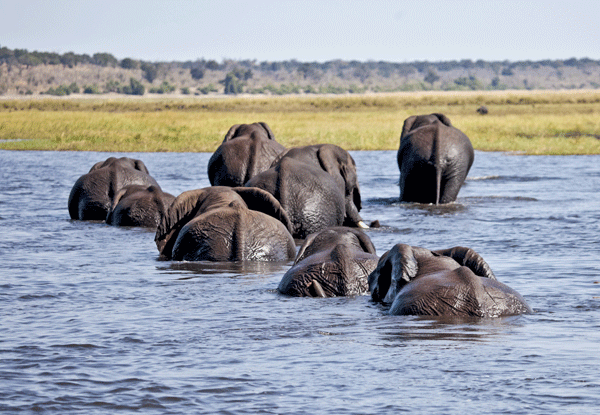
Having only been inaugurated in March 2012, this 444 000 square kilometre TFCA has already re-enabled the ancient migration; a sure sign of the enormous impact this project will have on our fundamental environment. Kaza has addressed the critical urgency to safeguard these newly identified corridors that elephants are using to emigrate out of Botswana. Of course, as this is a Conservation Area (as opposed to a Park), the enormously spread out borders incorporate occupied villages, which necessitates the care and protection of people against the impact and danger of free-roaming elephants. Kaza TFCA and the Peace Parks Foundation has implemented structural defences and educational programmes designed to teach a realistic, harmonious existence between Earth’s largest land mammal and our human communities.
I am amongst those Africans devastated at the plight of a species as armoured and mighty as the rhino, and I stand up in arms against the terrorisation of our wildlife; however, when I catch sight of something as spectacular as the transformation of the African elephant population, I delight in that glimmer of hope. With one of the richest accretions of carnivorous and herbivorous mammals in southern Africa, Kaza TFCA encourages the natural circle of life and the survival of the fittest to flourish. The largest contiguous population of elephant in Africa, at around 250 000, makes this almighty, tusked legend the flagship species of the TFCA. What an astounding and congratulatory turn-around!
Chloe Cooper
